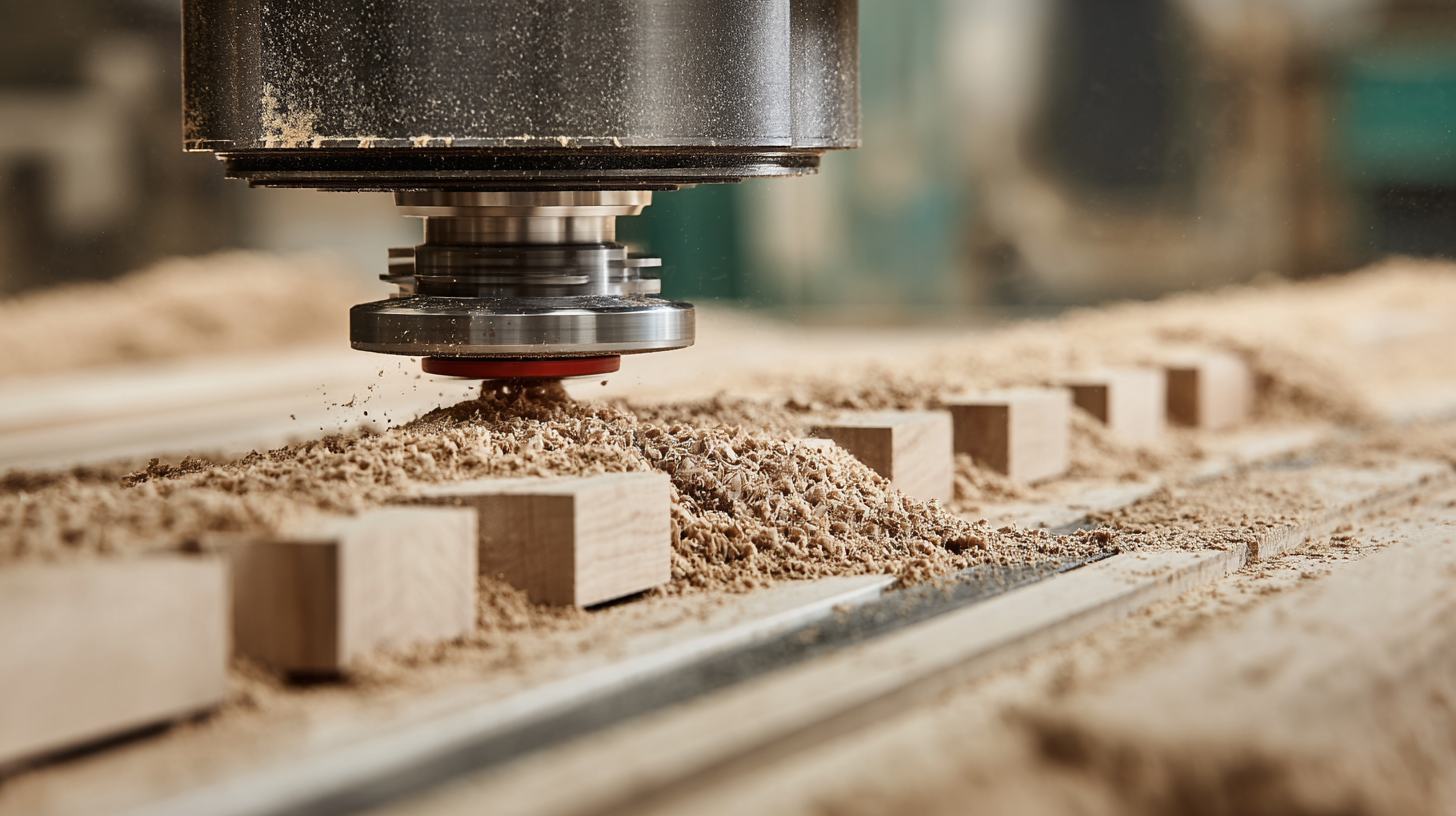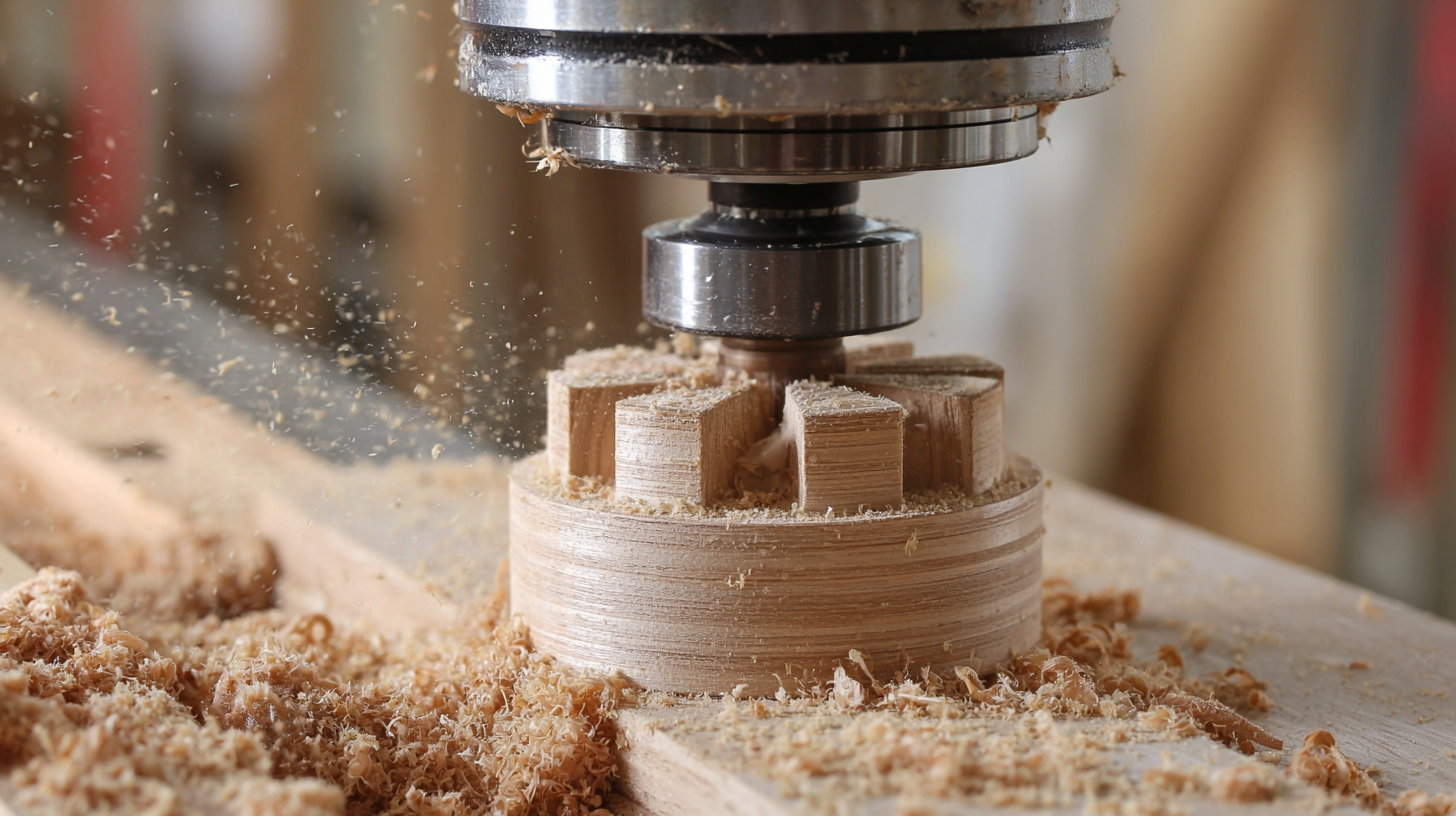In the world of woodworking and carpentry, the mastery of Tongue And Groove Router Bits has become increasingly essential for both hobbyists and professionals alike. A recent report by the Woodworking Machinery Industry Association indicates that the global market for woodworking tools is expected to reach $8.3 billion by 2025, with a significant rise in demand for precision tools such as router bits. These versatile tools not only enhance the aesthetic appeal of various projects but also contribute to structural integrity by ensuring tight-fitting joints. As creative projects continue to evolve, understanding the best techniques and applications for Tongue And Groove Router Bits can help craftsmen maximize their productivity while achieving high-quality finishes. In this blog, we will delve into effective strategies and tips that elevate your woodworking endeavors to new heights.

When embarking on creative woodworking projects, selecting the right tongue and groove router bits is crucial for achieving precision and quality. The variety of available bits can be overwhelming, but understanding the key factors in their selection can streamline the process. First, consider the material of the bit; carbide-tipped options tend to offer durability and longevity, making them suitable for both hardwoods and softwoods. Next, think about the profile of the bit—some projects may require specific designs that cater to unique joining techniques, so be sure to match the bit profile with the desired outcome.
Additionally, it's important to evaluate the overall compatibility of the router bits with your tools and the specific needs of your project. Bit size and shank diameter can significantly impact the stability and performance of the cuts. Opting for sets that include multiple bit sizes can enhance versatility, allowing you to tackle various projects efficiently. By taking these best practices into account, you can maximize your creative endeavors and achieve professional-looking results with every piece you create.

When embarking on creative woodworking projects, mastering tongue and groove router bits can significantly enhance your craftsmanship. These versatile tools are particularly effective for creating strong, seamless joints in various applications, from furniture making to cabinetry. To use tongue and groove router bits efficiently, it's essential to focus on technique and precision. Begin by selecting the appropriate bit profile for your material thickness to ensure optimal results.
Setting up your router accurately is crucial. Use a caliper to measure the grooves and tongues precisely, ensuring a snug fit that reinforces durability. Additionally, maintaining a steady feed rate while routing can prevent tear-out and ensure clean edges. Consider making test cuts with scrap wood to fine-tune your settings before working on your final piece. By incorporating these essential techniques, you can maximize the potential of your creative projects and achieve professional-quality results that will stand the test of time.

When using tongue and groove router bits, even experienced woodworkers can make common mistakes that affect the quality of their projects. One of the most frequent errors is not properly aligning the wood pieces before making the cut. This misalignment can lead to uneven joints that compromise the structural integrity of the final product. Ensuring that both the tongue and groove are carefully lined up will result in a seamless fit, enhancing the aesthetic appeal of the project.
Another common pitfall is neglecting to adjust the router speed according to the material being used. Different woods have varying densities, and using the wrong speed can cause burn marks or tear-out along the edges. Always test the setup with a scrap piece of the same material to determine the optimal speed before proceeding with the actual work. By taking these precautions, woodworkers can avoid unnecessary mistakes and achieve better results with their tongue and groove joints, allowing their creative visions to come to life effectively.
Tongue and groove router bits are incredibly versatile tools in creative design, offering unique ways to enhance your projects. These bits create seamless joints, perfect for furniture making, cabinetry, and decorative elements. One innovative application is using them to design custom paneling or wall art. By varying the depth and spacing, you can produce striking geometric patterns that elevate interior aesthetics.
Tip: When working on intricate designs, always practice on scrap wood first to ensure your technique is precise.
Moreover, tongue and groove joints can be adapted for building stunning outdoor furniture, such as picnic tables or garden benches. By incorporating these joints, you can achieve a strong and visually appealing finish that withstands the elements. Experimenting with different wood types and finishes can also add a personalized touch to your creations.
Tip: Consider using hardwood for high-traffic pieces to ensure durability while maintaining a beautiful appearance.
Maintaining and caring for your tongue and groove router bits is essential for ensuring their longevity and optimal performance. Regular cleaning is the first step in preserving these tools. After each use, remove any wood residues and pitch that could build up on the cutting edges. A simple wash with warm soapy water and a soft brush can do wonders. For tougher deposits, a mixture of vinegar and baking soda can help dissolve stubborn grime. Once cleaned, dry the bits thoroughly to prevent rusting, and consider applying a light coat of oil to protect them during storage.
Proper storage is equally important; keep your router bits in a protective case or rack to prevent them from hitting each other and dulling their edges. Ensure the storage area is dry and free from excessive humidity, as moisture can lead to corrosion. Additionally, inspect your bits regularly for any signs of wear or damage. Sharpening your bits when they start to lose their edge will ensure they continue to perform efficiently. By implementing these maintenance techniques, you can extend the life of your tongue and groove router bits and keep your creative projects on track.
| Router Bit Type | Material | Cutting Diameter (inches) | Shank Diameter (inches) | Use Cases | Care Tips |
|---|---|---|---|---|---|
| Straight Router Bit | High-Speed Steel (HSS) | 1/2 | 1/4 | Groove Cutting | Clean with a soft cloth after use |
| T&G Router Bit | Carbide Tipped | 3/4 | 1/2 | Tongue and Groove Joint | Lubricate bearings regularly for smooth operation |
| Rabbet Bit | Carbide | 1 | 1/2 | Rabbet Joints | Store in a dry place to prevent rust |
| Roundover Bit | Carbide Tipped | 1/2 | 1/4 | Edge Finishing | Check for wear and replace as needed |